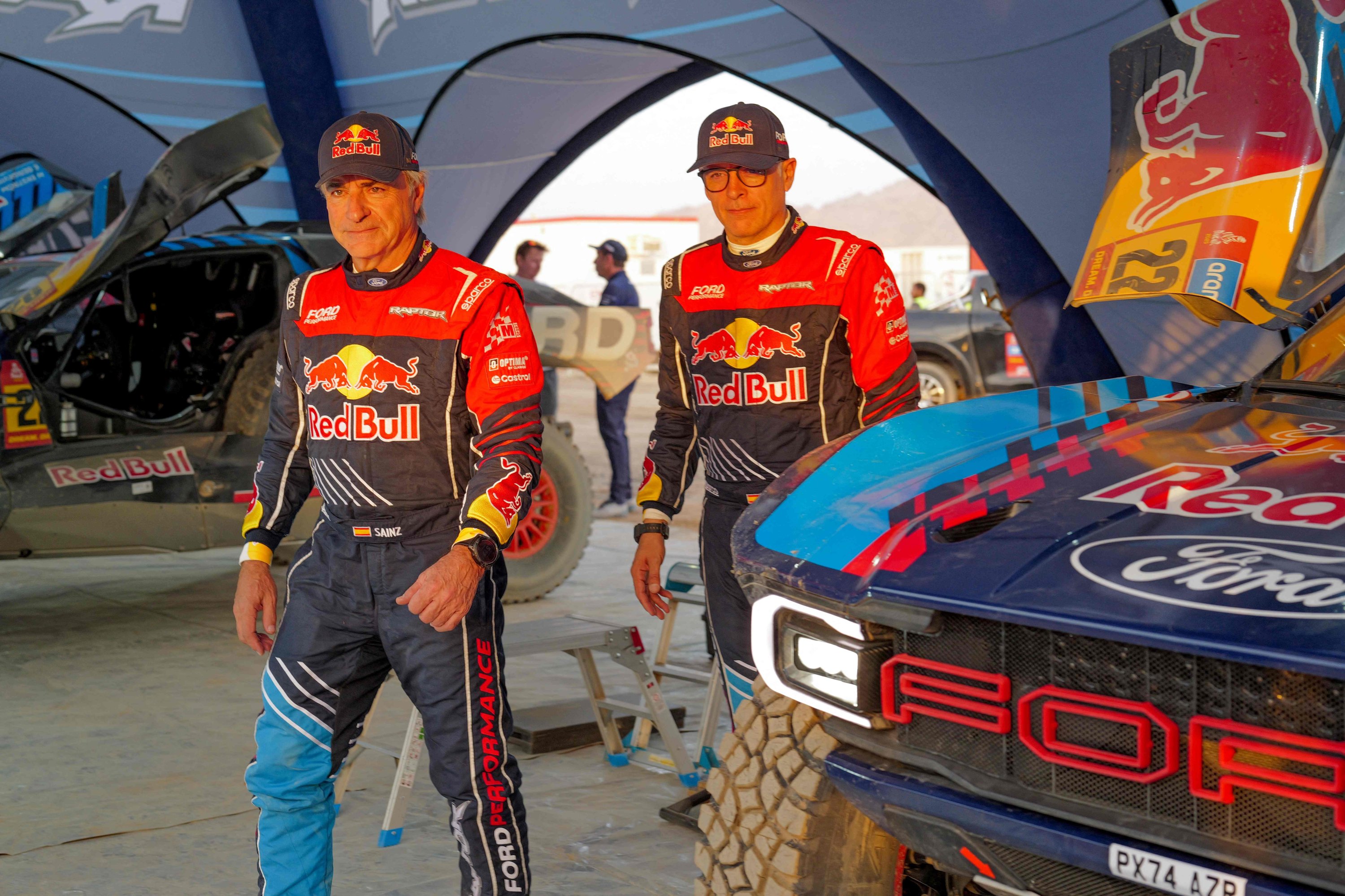© Turkuvaz Haberleşme ve Yayıncılık 2025
The Dakar Rally regarded as the world’s most grueling motorsport event, roars to life on Friday for its 47th edition in Saudi Arabia.
For the sixth year running, the kingdom is hosting the challenging race, where simply finishing is a monumental achievement.
This year’s rally kicks off with a prologue in Bisha and ends in Shubaytah on Jan. 17.
Spanning 7,805 kilometers (4 850 miles), including 5,209 kilometers of timed racing, competitors will face harsh landscapes, from coastal plains to the Rub’ al Khali Desert’s endless dunes.
A standout challenge this year is the two-day marathon stage, where drivers must reach one of six camps by 5 p.m. with minimal supplies for an overnight rest.
The following morning, they’ll race the final leg of a punishing 965-kilometer stage, testing their endurance and skill.
Among the legends, Stephane Peterhansel, with 14 Dakar titles (eight in cars and six on motorcycles), remains the most decorated driver.
Defending champions Carlos Sainz (Spain, cars) and Ricky Brabec (USA, motorcycles) return, looking to defend their crowns.

Sainz, who made history at 61 as the oldest Dakar winner, is back at 62, aiming for a fifth title.
Despite becoming a grandfather recently, Sainz is in top shape and ready to fight for victory. “I’m prepared physically and will give everything for a good race,” he said, confident in his new Ford Raptor car.
While no one has won with a factory car since Ari Vatanen’s 1987 Peugeot victory, Sainz’s rivals are also fielding new machines.
Five-time winner Nasser Al-Attiyah of Qatar and nine-time World Rally Champion Sebastien Loeb will pilot Dacia Sandriders, while one-time winner Nani Roma also returns in a Ford.
However, the race will miss the legendary Stephane Peterhansel, who retired after his 14th win last year.
In the motorcycle category, defending champion Brabec returns to defend his title. His main rival could be Botswana’s Ross Branch, last year’s runner-up.
With a 434-strong field of cars, bikes, quads, and trucks, the race promises to be an intense showdown across 12 stages.
The rally concludes on January 17 in Shubaytah, near the UAE border.
New for 2025, organizers have introduced a second 48-hour stage through the Empty Quarter, a sea of sand stretching for miles.
The challenge requires competitors to bivouac on the sand without external assistance, blending endurance with performance.
Race director David Castera describes it as the “rally of maturity” that will push competitors beyond their limits.
Since its inception in 1979, the Dakar Rally has witnessed both heroic victories and tragic losses.
Over the years, 33 competitors have died, alongside nearly 50 other casualties, including journalists and organizers.
Founder Thierry Sabine tragically lost his life in a helicopter crash during the 1986 race.
Once held in Africa, the rally moved to South America in 2009 and found a permanent home in Saudi Arabia in 2020. Today, it spans eight categories, including cars, motorcycles, ATVs and UTVs.
Saudi Arabia’s investment in motorsports, including the Dakar Rally, is part of a broader effort to diversify its economy and build a sporting legacy.
The kingdom also hosts a Formula One Grand Prix, high-profile boxing matches, and the world’s richest horse race.
Recently, it made headlines by being awarded the 2034 FIFA World Cup.
